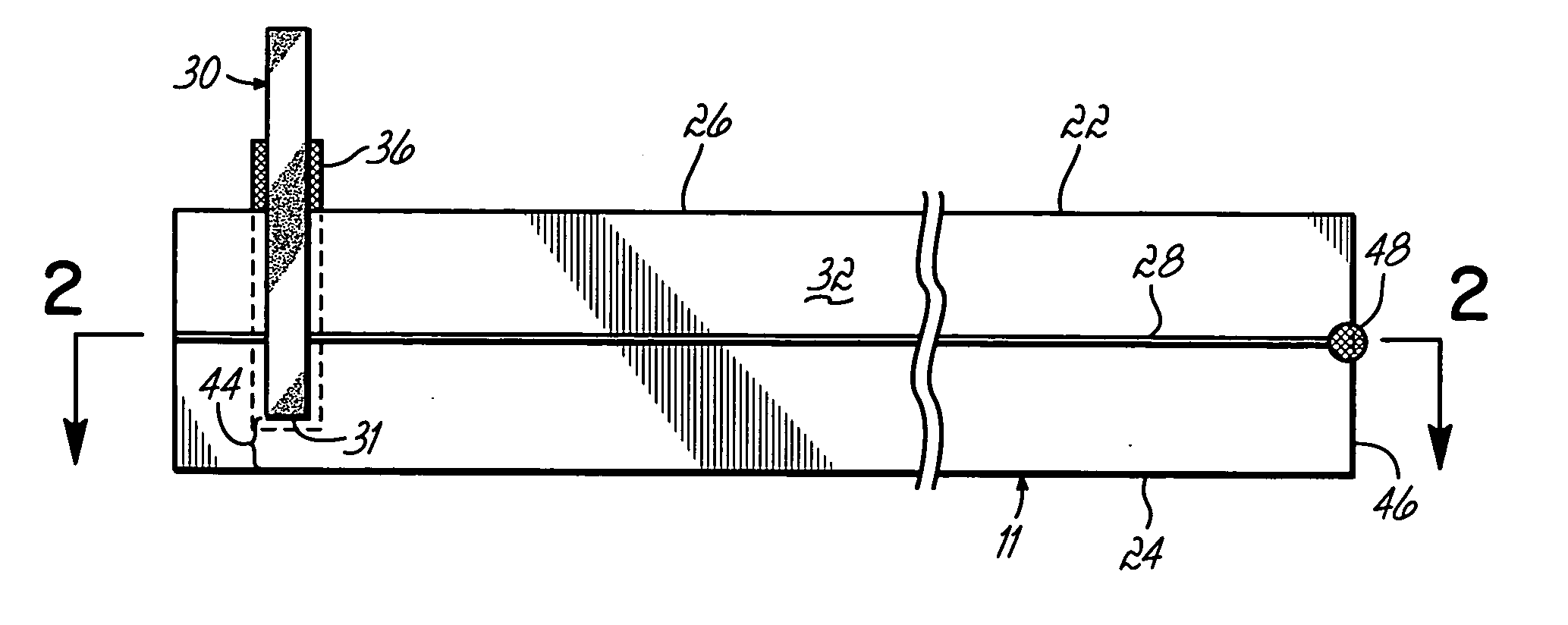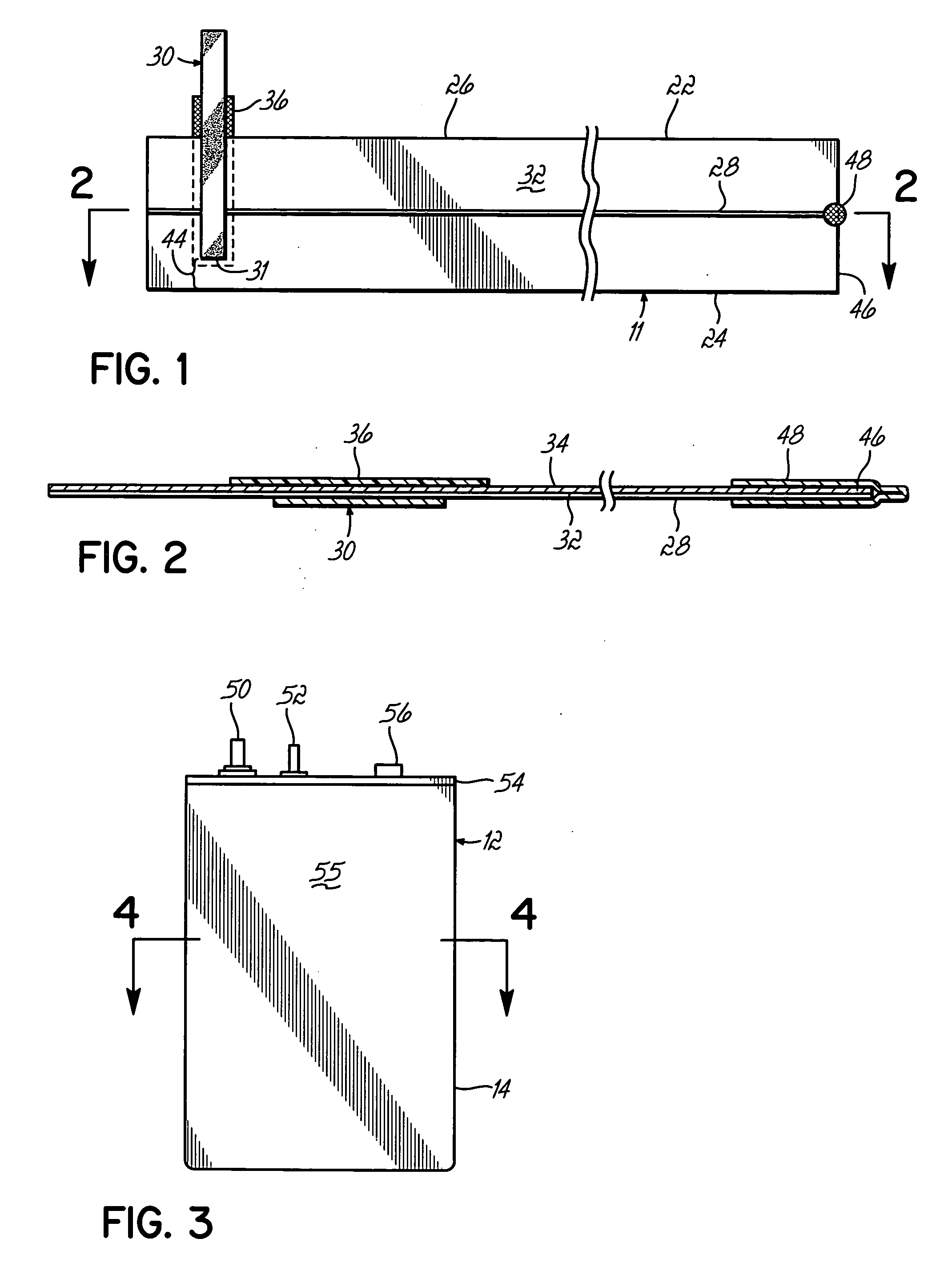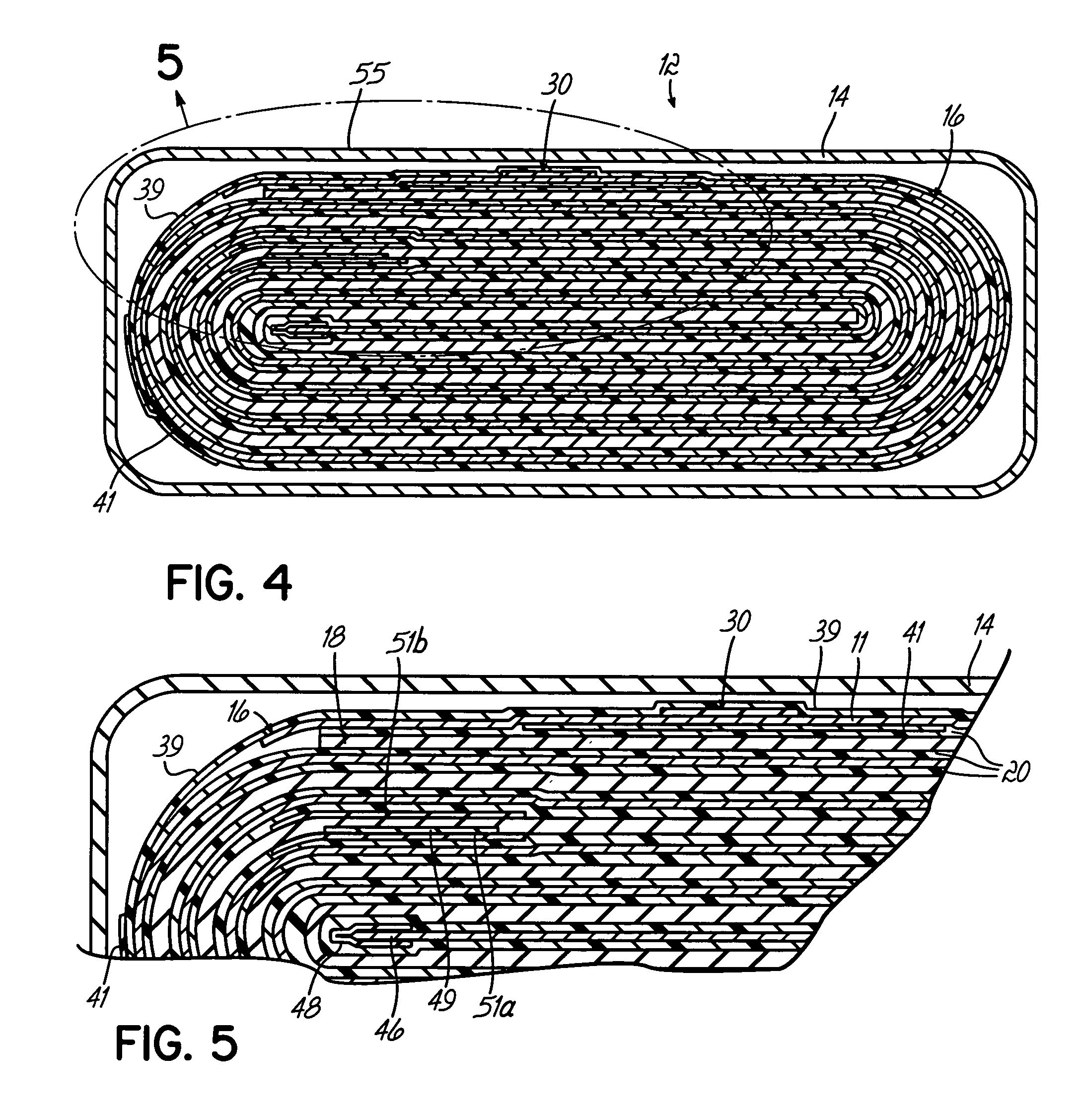Anode design for a prismatically wound LiMnO2 cell
- Summary
- Abstract
- Description
- Claims
- Application Information
AI Technical Summary
Benefits of technology
Problems solved by technology
Method used
Image
Examples
Embodiment Construction
[0012] The present invention is an anode 11 as well as a prismatic cell 12 which is specially designed to reduce impedance as the cell is discharged. As shown in the Figures, the prismatic cell 12 includes a casing 14 which houses an anode / cathode roll 16. The anode / cathode roll 16 includes the anode 11, solid cathode 18 and a separator 20.
[0013] As shown more particularly in FIG. 1 and FIG. 2, the anode 11 includes an elongated metal strip 22 having a bottom edge 24 and a top edge 26. The anode is a reactive metal relative to the cathode active material. In the preferred embodiment, the metal is lithium. Running down the long axis of strip 22 is an embedded nickel wire 28 which acts as a current collector. More than one wire can be employed, if desired. An anode tab 30 is attached to a first side 32 of strip 22. As shown, this is attached by simply crimping portions of the nickel tab 30 into the metal strip 22.
[0014] The anode tab 30 extends partially down the width of the strip ...
PUM
 Login to View More
Login to View More Abstract
Description
Claims
Application Information
 Login to View More
Login to View More - Generate Ideas
- Intellectual Property
- Life Sciences
- Materials
- Tech Scout
- Unparalleled Data Quality
- Higher Quality Content
- 60% Fewer Hallucinations
Browse by: Latest US Patents, China's latest patents, Technical Efficacy Thesaurus, Application Domain, Technology Topic, Popular Technical Reports.
© 2025 PatSnap. All rights reserved.Legal|Privacy policy|Modern Slavery Act Transparency Statement|Sitemap|About US| Contact US: help@patsnap.com



